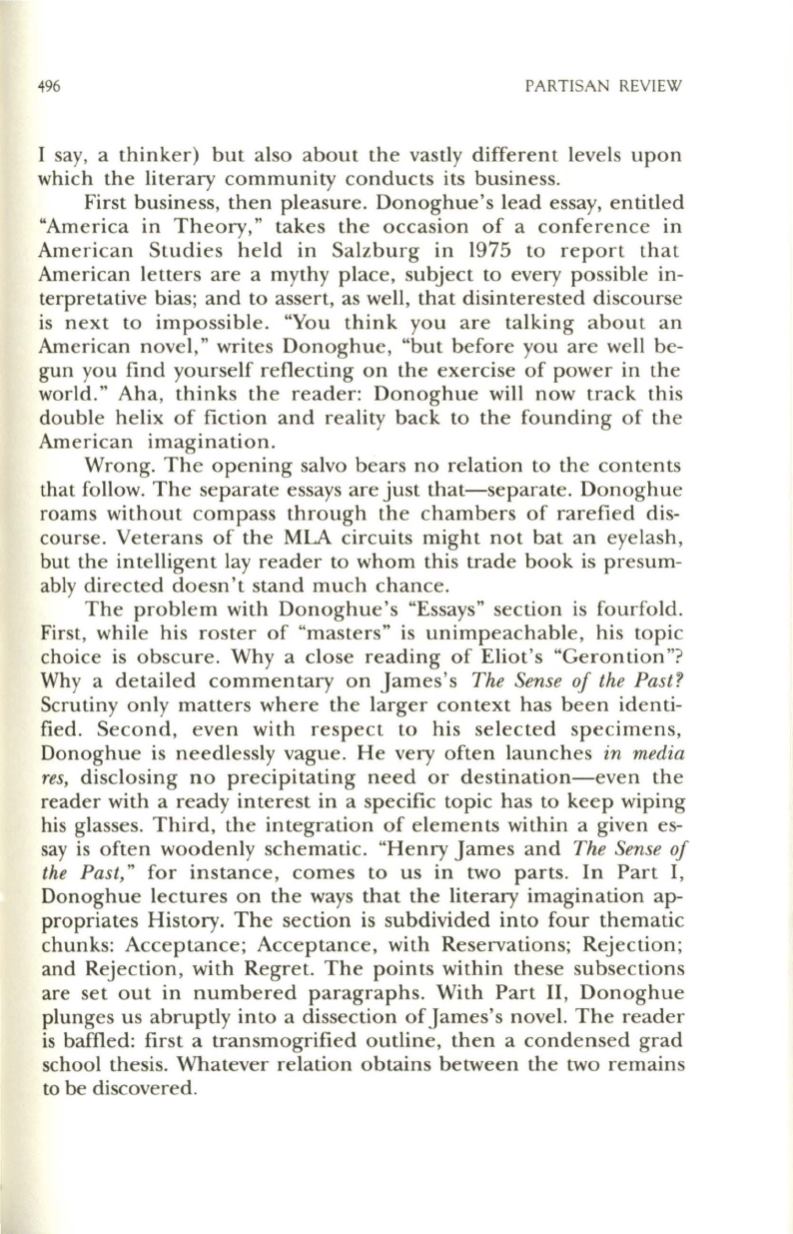
496
PARTISAN REVIEW
I say, a thinker) but also about the vastly different levels upon
which the literary community conducts its business.
First business, then pleasure. Donoghue's lead essay, entitled
"America in Theory," takes the occasion of a conference in
American Studies held in Salzburg in 1975 to report that
American letters are a mythy place, subject to every possible in–
terpretative bias; and to assert, as well, that disinterested discourse
is next to impossible. "You think you are talking about an
American novel," writes Donoghue, "but before you are well be–
gun you find yourself reflecting on the exercise of power in the
world." Aha, thinks the reader: Donoghue will now track this
double helix of fiction and reality back to the founding of the
American imagination.
Wrong. The opening salvo bears no relation to the contents
that follow. The separate essays are just that-separate. Donoghue
roams without compass through the chambers of rarefied dis–
course. Veterans of the MlA circuits might not bat an eyelash,
but the intelligent lay reader to whom this trade book is presum–
ably directed doesn't stand much chance.
The problem with Donoghue's "Essays" section is fourfold.
First, while his roster of "masters" is unimpeachable, his topic
choice is obscure. Why a close reading of Eliot's "Gerontion"?
Why a detailed commentary on James's
The Sense of the Past?
Scrutiny only matters where the larger context has been identi–
fied. Second, even with respect to his selected specimens,
Donoghue is needlessly vague. He very often launches
in media
res,
disclosing no precipitating need or destination-even the
reader with a ready interest in a specific topic has to keep wiping
his glasses. Third, the integration of elements within a given es–
say is often woodenly schematic. "Henry James and
The Sense of
the Past,"
for instance, comes to us in two parts. In Part I,
Donoghue lectures on the ways that the literary imagination ap–
propriates History. The section is subdivided into four thematic
chunks: Acceptance; Acceptance, with Reservations; Rejection;
and Rejection, with Regret. The points within these subsections
are set out in numbered paragraphs. With Part II, Donoghue
plunges us abruptly into a dissection ofJames's novel. The reader
is baffled: first a transmogrified outline, then a condensed grad
school thesis. Whatever relation obtains between the two remains
to be discovered.


